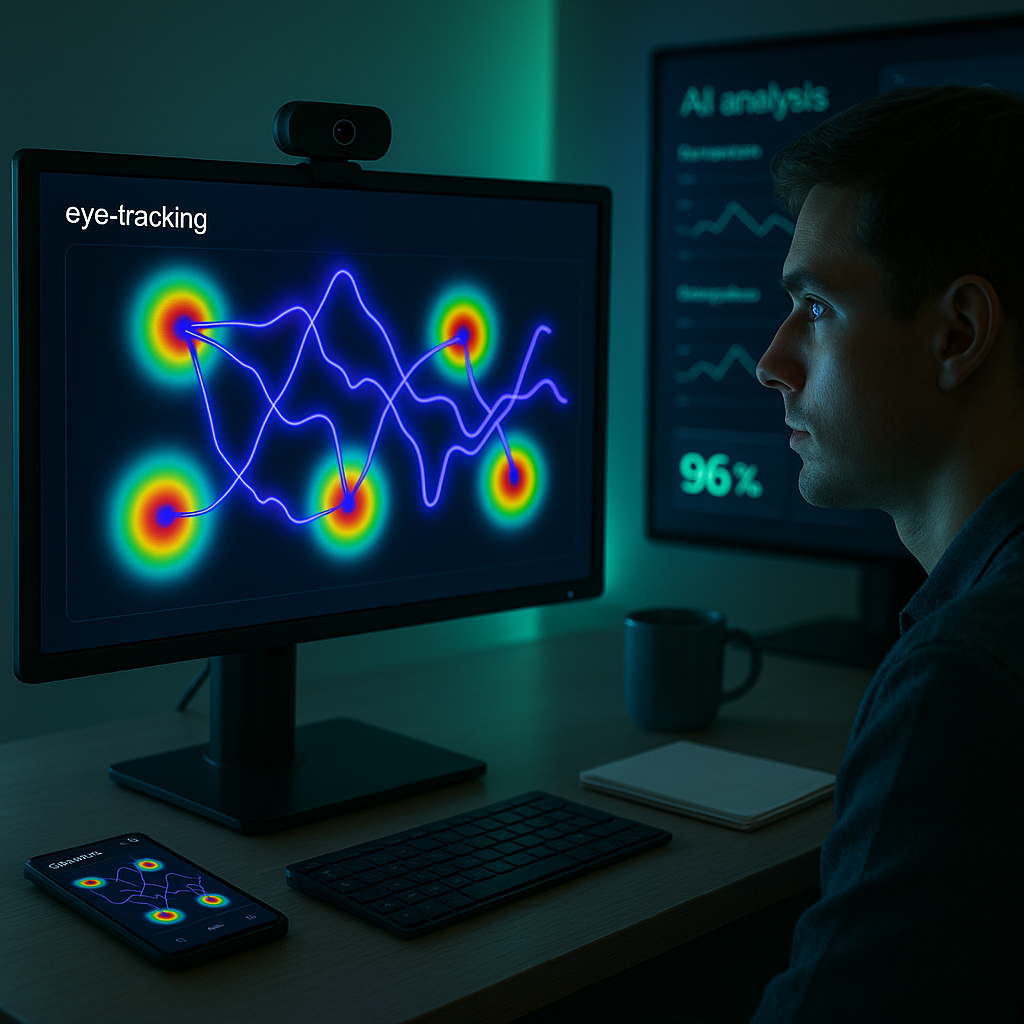Key Takeaways
- Time blindness is one of the most overlooked challenges faced by people with ADHD, impacting daily routines and long-term goals. If time always feels slippery, deadlines sneak up, and schedules never quite stick, you’re not alone. You are certainly not broken. The key takeaways below unpack the core causes behind time blindness, explain how executive dysfunction shapes our sense of time, and highlight ADHD-friendly tools and strategies that can lead to real, lasting progress.
- Time perception isn’t broken; it’s simply wired differently. For neurodivergent brains, time rarely feels linear or consistent. Standard productivity advice often fails because it overlooks these differences. Understanding your unique neurological wiring is the first step.
- Executive dysfunction is a root driver of time blindness. Difficulties with planning, prioritizing, and getting started are not about laziness. Instead, they reflect how ADHD brains receive, interpret, and manage time signals.
- Traditional time management tools usually fail to deliver for neurodivergent minds. Rigid schedules, basic timers, and endless to-do lists can create more overwhelm rather than clarity if they don’t adapt to your neurotype and daily reality.
- Innovative tools transform challenges into leverage. Visual timers, adaptive time-tracking apps with smart reminders, and externalizing strategies (like color-coded calendars or physical cues) help make time visible and interactive.
- Strategies that make time tangible unlock genuine progress. Chunking tasks, harnessing hyperfocus windows intentionally, and setting up “time anchors” are research-backed methods that can ground routines and reduce the rate of missed appointments or deadlines.
- Shame-free, affirming approaches drive sustainable change. The biggest breakthroughs come from working with your brain, not against it. Systems that honor neurodivergence build confidence and resilience, not just compliance.
- It’s absolutely possible to turn struggle into strength. By designing systems for ADHD rather than wishing symptoms away, you can transform time blindness into a catalyst for creativity, business growth, and a deeper sense of control.
Transforming the way you relate to time starts with self-understanding and continues through the right tools and a shift in perspective. In the following sections, you’ll discover why conventional productivity advice often falls short, and explore new, ADHD-aligned strategies already helping people worldwide reclaim clarity and momentum.
Introduction
If clocks always sound more like vague suggestions and deadlines tend to ambush you, there’s a good reason: you’re experiencing time blindness, one of the most misunderstood aspects of ADHD. For many neurodivergent minds, time isn’t a steady, reliable line but a slippery, elastic force that resists traditional scheduling and routine.
True understanding of time blindness in ADHD means moving past outdated labels like “lazy” or “disorganized.” The real roots lie in unique brain wiring and executive function differences that fundamentally shift how time is felt and managed. The best news? With innovative strategies, practical tools, and a mindset that embraces your distinct operating system, it’s possible to convert time chaos into a creative advantage. Let’s explore how making time tangible, building neurodivergent-friendly systems, and reframing your relationship with time can finally lead you to visible, lasting progress on your own terms.
Understanding Time Blindness in ADHD
Before exploring solutions, it’s important to grasp what time blindness actually feels like and why it emerges for people with ADHD. Rather than simply running late, individuals report living in a world where their internal clock seems to speak a different language than everyone else’s. For people with ADHD, time often exists in only two states: “now,” and “not now.” This unique perception can make it challenging to keep pace in environments built on deadlines and precision.
The Science Behind Time Perception
Time blindness is deeply connected to differences in executive function, which acts as your brain’s air traffic controller, orchestrating focus, planning, and transitions. In ADHD, this controller often operates in a different “time zone,” resulting in:
- Difficulty estimating how long tasks will take. For example, a quick email might consume two hours, while a large, intimidating project wraps up unexpectedly quickly.
- Hyperfocus that erases time awareness. Hours can disappear in a flash when deeply absorbed in a task or interest.
- Inconsistent internal pacing. The same activity might feel strenuous and endless one day, then fast and effortless the next.
These experiences don’t reflect personal failings. They are the natural result of how neurodivergent brains experience the flow of time.
Real-World Impact Across Life Domains
Time blindness affects so much more than just punctuality. It shapes financial management, social life, work, and even health. Consider these scenarios:
- Beginning to cook dinner minutes before guests are due to arrive, underestimating prep time.
- Forgetting bill payments or appointments despite reminders on hand.
- Spending hours on digital organizing while a pressing project or deadline is overlooked.
- Missing medication doses or health check-ins due to distorted time cues.
In fields such as education, this might mean consistently missing assignment deadlines, while in healthcare, it could cause challenges sticking to medication schedules. In business and legal settings, time blindness can result in missed meetings, contract oversights, or errors in time-sensitive client communication.
These challenges aren’t about motivation or effort. They emerge from a brain-response to time that doesn’t fit “typical” expectations.
Why Traditional Time Management Fails
Most time management systems were crafted for neurotypical minds, built on assumptions of steady internal clocks and consistent motivation. This disconnect sets the stage for frequent frustration and feelings of defeat among those with ADHD and other neurodivergences.
The Mismatch with Neurodivergent Thinking
Traditional systems usually:
- Presume you can accurately feel and measure time.
- Depend on unwavering internal motivation.
- Require strict habit formation and self-monitoring.
- Place heavy emphasis on rigid scheduling and lists.
For ADHD brains, this approach can feel like measuring water with a ruler. The tool simply doesn’t match the reality. In practice, this mismatch leads to increased overwhelm, incomplete tasks, and a loss of confidence, whether you are a student struggling with essays, a freelancer balancing client deadlines, or a healthcare professional trying to coordinate shifts or appointments.
Innovative Solutions That Actually Work
Closing the gap between conventional tools and neurodivergent needs requires practical, tech-enabled, and individually adaptable solutions. Making time visible and interactive is a game-changer across personal and professional domains.
Making Time Tangible
To manage what you can’t see, first make it visible.
-
Visual Timers
-
Use Time Timer apps or physical devices that show time disappearing in color.
-
Break down larger projects with separate segment timers.
-
Track longer-term goals with visible countdowns or progress bars.
-
Environmental Cues
-
Keep analog or digital clocks clearly visible during tasks.
-
Leverage smart lighting that shifts colors at designated times (e.g., blue for working hours, orange for break time).
-
Establish physical timeline markers within your workspace.
For example, a music teacher improved student lesson punctuality by installing a “progress bar” light strip in the classroom. When the strip turned red, lessons wrapped up, helping make abstract time concrete for neurodivergent learners.
Leveraging Technology
Modern tools can externalize executive function, helping bridge gaps in time perception:
- Smart home automation adjusts the environment. Lights may dim 30 minutes before bedtime to cue transition.
- AI assistants and digital calendars send contextual reminders tied to real-life triggers.
- Time-tracking apps provide detailed feedback on how long tasks actually take, contrasting perceived versus actual effort.
A software developer with ADHD raised his video call attendance from 60% to 95% by using smart lights programmed to flash purple five minutes before each meeting. This tactic is equally valuable in medical, legal, or creative settings.
Industry Examples
- Healthcare: Nurses use smart badges that vibrate when it’s time to check vitals, reducing missed steps.
- Finance: Accountants set calendar color codes for client follow-ups, visualizing priority within packed schedules.
- Education: Teachers implement timer-based classroom management to help all students transition smoothly between activities.
- Retail: Employees rely on digital signage that changes color or displays countdowns to facilitate swift inventory checks.
Building Personal Systems That Stick
Transforming strategies into habits means embracing your natural rhythms, rather than resisting them, while personalizing approaches for your sensory and cognitive preferences.
The Body Clock Approach
Opt for systems that respect your variations in energy and attention throughout the day:
-
Energy Mapping
-
Track which hours you are at your sharpest. Use this data to align demanding tasks with peak-focus windows and schedule recharge breaks after mentally taxing sessions.
-
Anchor Activities
-
Pair time-sensitive habits (like medication or admin tasks) with daily routines (e.g., breakfast, coffee break, brushing teeth) to form strong, reliable anchors.
Customizing for Your ADHD Style
No universal method will fit everyone; personalized adaptations deliver far greater results.
-
For Visual Processors:
-
Color-code calendar blocks for clearer scheduling.
-
Create visual project boards using mind mapping tools.
-
Check off progress via visual checklists or sticker charts.
-
For Kinesthetic Learners:
-
Tie time cues to physical movement; for example, stand up and stretch every time a particular song plays.
-
Use textured objects or fidgets as time markers.
-
Divide your workspace into zones, each representing a different phase of your task list.
A freelance designer boosted project completion by 40% after creating a “time zone” system in her home office, associating each physical space with a different work activity. This strategy can be just as valuable in classrooms or health clinics.
Cross-Industry Examples
- Legal: Attorneys review case documents in a designated “focus nook” to minimize time loss from distractions.
- Marketing: Campaign planners use segmented workstations for brainstorming, analysis, and execution, helping keep projects on schedule.
- Environmental Science: Lab teams set up visible progress walls to make research milestones and deadlines tactile, not just theoretical.
Advanced Strategies for Complex Situations
Navigating multiple priorities and responsibilities brings extra challenges, especially when time blindness is at play. Robust systems can prevent overwhelm before it starts.
Managing Multiple Projects
When juggling several tasks or large projects, try:
-
Project Chunking
-
Break down tasks into blocks of 25 minutes (using timers or physical tokens).
-
Map projects visually, noting both effort required and due dates.
-
Time Buffering
-
Add a 50% buffer to all initial time estimates.
-
Create buffer zones between meetings or deadlines to allow for overruns and transitions.
-
Schedule “emergency time” blocks to absorb unexpected interruptions.
A startup founder with ADHD raised company-wide productivity by distributing “Time Block Tokens.” Each token, a physical chip representing 30 minutes, helped staff allocate their day. Such tangible tools are now being adopted in team-based work, therapy clinics, and educational settings.
Broader Applications
- Education: Students chunk study sessions with tactile objects, such as colored beads for each 25-minute sprint.
- Healthcare: Medical teams schedule patient rounds with visual magnet boards that display time slots clearly.
- Finance: Financial advisors maintain specialized buffer periods ahead of tax deadlines to ensure client files are completed without last-minute chaos.
Conclusion
Time blindness in ADHD is not a character flaw nor a personal failure. It’s the natural result of a brain that perceives time differently, operating with unique rhythms and cues that rarely align with one-size-fits-all systems. Standard productivity tools often disappoint because they ignore this essential difference, leaving neurodivergent professionals and creatives feeling defeated by systems that weren’t designed with them in mind.
The path forward lies in making time tangible: use visual, physical, and interactive cues to reshape your relationship with schedules and energy. Whether you’re leveraging smart automation, crafting personalized routines, or designing a workspace that mirrors your workflow, these approaches give structure without stifling creativity or authenticity.
Powerful strategies like energy mapping and “time zone” workspaces do more than anchor routines. They help turn your unique wiring into real-world strength. When solutions honor your neurotype, what once felt like a deficit transforms into the very leverage that enables personal growth, business success, and creative innovation.
Looking toward the future, those who embrace neurodivergence with adaptable, data-informed strategies will be at the forefront, redefining what productivity and progress look like in our fast-changing world. Rather than just coping with time blindness, imagine using it as a springboard for breakthrough ideas, resilient workflows, and a renewed sense of agency over your life. The opportunity is not simply to fit into existing systems. It is to shape new paradigms where your brain’s brilliance sets the pace.





Leave a Reply